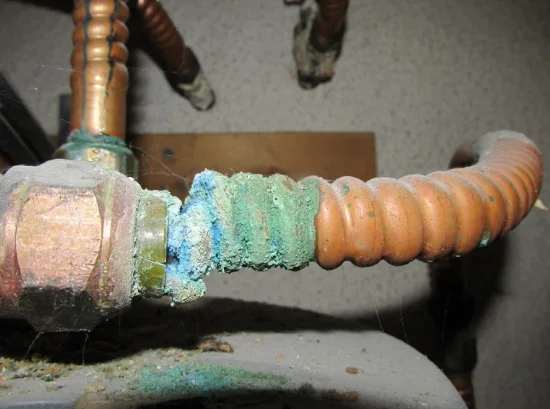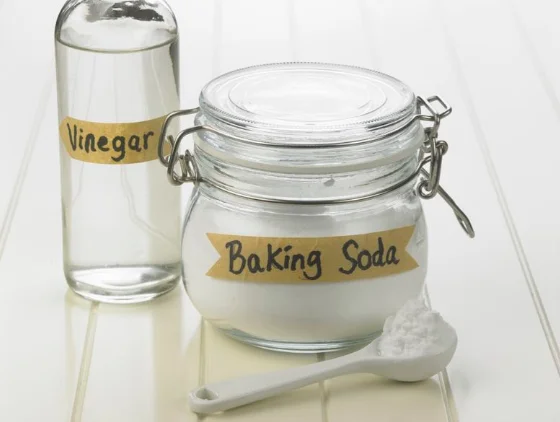Black residue in bathtubs is inevitable. If you do not want it to coat your walls and sink, you should start by understanding what it is. Black residue in bathtubs is actually a mineral deposit that comes from the water.
This black residue becomes more visible when there are higher amounts of calcium or magnesium in the water. It is sometimes due to hard well water, but it can also be caused by the use of certain soaps or shampoos.
Also Read: Things to Do with Old Sinks: Steel, Porcelain or Composite
What is Black Residue in a Bathtub?
If you’ve noticed a black residue on your bathtub or sink, it’s probably minerals from the water.

The more calcium and magnesium in the water, the more visible it will be.
The residue is evident due to hard well water, but can also be due to soaps or shampoos.
Causes of Black Residue in Bathtub
The most common cause of black residue in the bathtub is hard water. Other causes include soaps, shampoos, and other minerals in the water.
Let us discuss every aspect in full detail:
1. Mineral Deposits
The black specs could be the evidence of manganese or iron in the water. Although the appearance could be startling, some small amounts of such minerals could to be harmful.
One way of clearing your conscious is to have a water test.
2. Water Filter
If the black specs are showing in your bathtub, it could be a result of a carbon filter. For that reason, you can try to replace the filter and see if there any changes or not.
Finding the root cause will help you to overcome similar encounters in future.
3. Corroded Water Heater

Suppose you observe black residue as you run hot water, then check the condition of the heater.
Since the average lifespan of a water heater is 12 years. If the unit is younger, then try to drain the flush line or the tank.
In the same vein, if it is hot, you can replace it to overcome any challenge therein.
4. Old Pipes
Pipe begin to wear down and corrode over time. Such means that tiny peace could break and appear in the water.
You can use a licensed plumber to inspect and your plumbing to establish if the old pipe are form the municipal system or your home.
5. Worn Out Rubber Parts
If you collect some participles and feel rubbery, chance are high that they are worn out rubber particles for your plumbing parts. Plumbers use rubber washers, gaskets, and other hoses to make water tight connections. However, these materials will break over time eventually.
The best approach is to do a replacement of these washers and other rubber parts when you suspect they have been there for a while.
6. Sand or Silt
In case you have a private well at your residence, some small amounts of silt or sand may get pumped along with your water from the ground. As such, you can use a professional plumber to filter and eliminate the sediments. Such particles are harmful since they can cause tear or wear of plumbing parts.
Causes of Black Residue in the Bathtub Water
If you have hard water, the black residue in bathtub is real courtesy of calcium or magnesium deposits. One can remove such stains with a product called CLR, which will also remove limescale, soap scum and rust stains.
Many people assume that the black residue in bathtub comes from the dirt that sits on the top of the surface of water. It appears to be black because it absorbs light.
You can prevent this by using a product like Ritchie’s Lye based liquid soap, which will help remove soap scum, oil and dirt from your bathtub. This soap has natural ingredients to help dissolve calcium deposits.
Another cause of black residue in bathtub can be hard water that has been softened by use of liquid sodium hydroxide (NaOH) or liquid potassium hydroxide (KOH).
Causes of Black Residue in Bathtub in HOT Water Only
If you notice that the black residue in bathtub only appears when you take a shower, then it could be due to hard water.
-Try using a water softener. If your water is really hard, get yourself a water softener to help with the problem.
-This will help remove the calcium and magnesium from your water so you can stop seeing black residue in bathtub!
Also Read: Pantry Moths: All you need to Know to Control Them & FAQs
How to fix Black Residue in Tap or Bathtub
As you can see, there are many ways to remove black residue in bathtub. It’s important to start by understanding what it is. You do not have to fret when you notice such a scenario.
Many ways exists to help you eliminate such challenges in your bathtub. For instance, you can observe the following steps to overcome this nuisance:
1. Remove it with Vinegar

One way to easily remove black residue in bathtub is to use vinegar. Pour some white vinegar into a bowl or sink full of water.
Scrub the area with an old toothbrush until clean. Rinse off any remaining vinegar with cold water and allow the surface to dry before using again.
2. Clean it with Baking Soda + Soap
Another method for removing black salt stains in the tub is to scrub them with baking soda and soap.
Make a paste out of baking soda and dish washing soap then apply it to the stained area. Scrub vigorously for at least ten minutes then rinse off thoroughly with warm water and pat dry before using again.
3) Use Coffee Grounds
Fill your bathtub halfway with warm (not hot!) water then fill about half of that space up again with used coffee grounds (cafe grinds). Stir them around so they react and eliminate the stain.
Tips to Prevent Residue or Particles in Bathtub
You can’t always prevent black residue in bathtub, but you can still take measures to protect your bathtub.
1. Use a water softener or filter that contains a calcium or magnesium remover.
2. Pour vinegar into the tub through the drain before taking your bath to remove particles.
3. Clean your tub with baking soda and white vinegar mixed together for tough stains and residue buildup.
4. Clean the bathtub with dish soap mixed with hydrogen peroxide once a week for quick results.
5. Rinse out your showerhead monthly for best results on both fixtures at once!
6. Avoid hard well water if possible by using a different type of water supply or investing in a filter that addresses this issue specifically
7. Consider using low-phosphate shampoo/soap for less residue buildup
Also Read: What Kind of Soap do You Put in Kitchen Sink Dispenser?
Tiny Bugs in Bathtub, and how to Prevent them
There are a variety of little bugs that can make their way into your bathtub, and the most common one is a type of insect called a drain fly. Drain flies are attracted to water and they feed off natural oils from skin and hair as well as soap scum on the sides of the tub.

Drain flies don’t bite or pose any health risk to humans, but they live for about a week before laying eggs in the drain trap.
These eggs hatch into larvae which eat more oil and produce more residue on the inside of your pipes.
This black residue is another type of mineral deposit that comes from the water. It becomes more visible when there are higher amounts of calcium or magnesium in the water.
If this is happening, it’s likely because you have hard water or you use soaps or shampoos with those ingredients.

I love writing about solutions on issues that I face at home and around the community. I love to share creative ideas and valuable reviews of some of the best products to make your home experience better.

